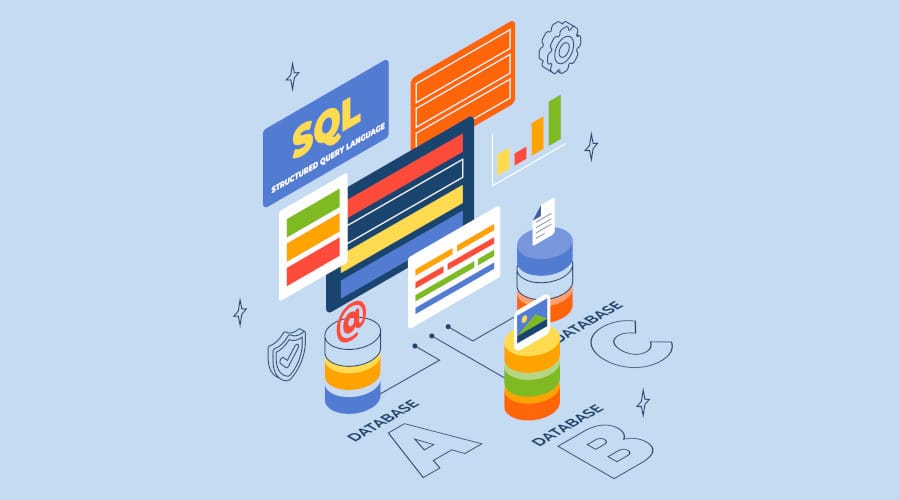To manage and analyze functional data, data experts can use a wide variety of tools. These include SQL and Panda and tghe Pandas Read SQL Function.
Often presented as two alternative options (it’s either one or the other), they are in fact highly complementary. And for good reason: the Python library is able to read Structured Query Language through its Pandas Read_SQL functions. Let’s take a closer look.
💡Related articles:
What is Pandas Read_SQL / Pandas Read SQL Function?
Pandas Read_SQL is a feature of the Python library that extracts the results of a SQL query directly into the Panda dataframe.
But beware, there are two SQL read methods:
- pandas.read_sql_query: this is the original formula for using SQL queries in Pandas.
- pandas.read_sql: this simplifies the first option, since it combines read_sql_query and read_sql_table.
- The latter allows you to read an entire SQL table in Pandas. With this function, both queries and tables can be read.
How do I use the Pandas Read_SQL query / Pandas Read SQL Function?
Prerequisites
To use the Pandas Read_SQL query/ Pandas Read SQL Function effectively, you’ll need to install a few Python packages, such as :
- SQLAlchemy: this package lets you interact with SQL databases directly in Python code. It’s not mandatory, but it makes workflow easier.
- An adapter: whether you use PostgreSQL, MySQL, Oracle or any other dialect, you’ll need an adapter for Python so that Pandas and SQL can complement each other.
- A Python package manager: like pip.
Not to mention access to an SQL database (whether remotely or on a local machine).

Using Pandas Read SQL Function
Once all the packages have been installed, you need to open a connection to your database source. This is precisely why SQLAlchemy is useful, as it allows you to create a connection.
Thanks to this connection, you can then extract the results of a basic SQL query in Pandas. This is where the Pandas read_SQL query comes into play.
This query takes the following form:
df = pandas.read_sql_query(”’SELECT * FROM table-name”’, con=cnx)
We then need to specify the various parameters of this piece of code:
- df: this is the Pandas dataframe where the table data will be stored.
- SELECT * FROM table-name: this specifies the data to be selected in the table.
- con=cnx: this is the connection between Pandas and SQL.
df = pandas.read_sql_query('''SELECT * FROM my_view''', con=cnx))
Good to know: This is a basic model of how to use Pandas Read_SQL. It’s also possible to create a generalized query string to extract different ranges. And all this while adapting your queries and their variables. Controlling data volumes
Although Pandas.Read_SQL can be used to extract several ranges of data, care needs to be taken with the amount of data to be entered. This is particularly true for very large databases.
Indeed, if you want to read SQL databases with Pandas, remember that the Python library stores not only the data frames, but also the processing of SQL query results. If you don’t have enough memory, you’ll run the risk of making a lot of errors.
To overcome this problem, you can use the Chunksize parameter built into Pandas. This controls the volume of imported data. If the limit is reached, it’s best to extract your SQL data in batches.
To use this function, simply type this query:
df = pandas.read_sql_query(”’SELECT * FROM table-name”’, con=cnx, chunksize=n)
Here, n refers to the number of rows you wish to include in the dataframe.

What are the limitations of the Pandas Read SQL Function?
Although Pandas Read_SQL makes it easy to extract SQL databases from the Python library, you should also be aware of its limitations.
Indeed, this query takes up an enormous amount of space, due to the storage of the dataframe and the processing of SQL query results. Sufficient memory must be available.
In addition to causing potential errors when importing massive amounts of data, this feature is often the cause of slow loading times. Even when data volumes are modest.
If you want to speed up loading times, Pandas Read-SQL is definitely not the best option for extracting your SQL databases.
Join DataScientest to manage your databases
Whether it’s Pandas or SQL queries, these are essential tools for managing and analyzing databases. So, to master DBMS to perfection, it’s essential to be trained in both solutions.
Fortunately, DataScientest offers a comprehensive range of data-related training courses. Whether it’s a bootcamp, ongoing training or a sandwich course, you’ll quickly learn how to use these tools and be up and running straight away.










